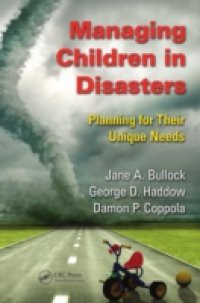Each year, disasters such as house fires, car accidents, tsunamis, earthquakes, and hurricanes impact hundreds of thousands of children. Child victims can suffer disproportionately and the physical and psychological damage sustained can far outweigh the same effects in adults, often requiring years of therapy. Sadly, emergency planners to date have largely failed to adequately recognize and accommodate the particular requirements of children in times of disaster. Identify NeedsHighlighting the infrastructure that supports children in a safe and secure community, Managing Children in Disasters begins by identifying the special needs of children, including physical security, emotional stability, family unity, and ongoing education. It looks at how hazard mitigation actions can reduce the long- term impact of a disaster on this infrastructure, and outlines the many steps that can be taken by parents, emergency managers, school officials, and child care providers to prepare for a future incident. Target ResourcesThe book reviews what agencies and organizations can do to ensure that children are protected and families remain intact. It examines evacuation plans and processes, emergency shelters, and the recovery and rebuilding process. The final chapter provides a list of resources in emergency planning, psychosocial recovery, training and education courses, technical assistance, and other organizations. It includes examples of existing programs, reports, sample plans, and guides written for children.Offering guidance for the family and community, this book discusses the types of efforts that can be undertaken in all phases of emergency management including preparation, immediate response, and recovery.

